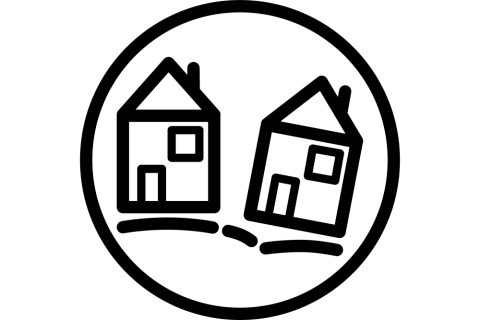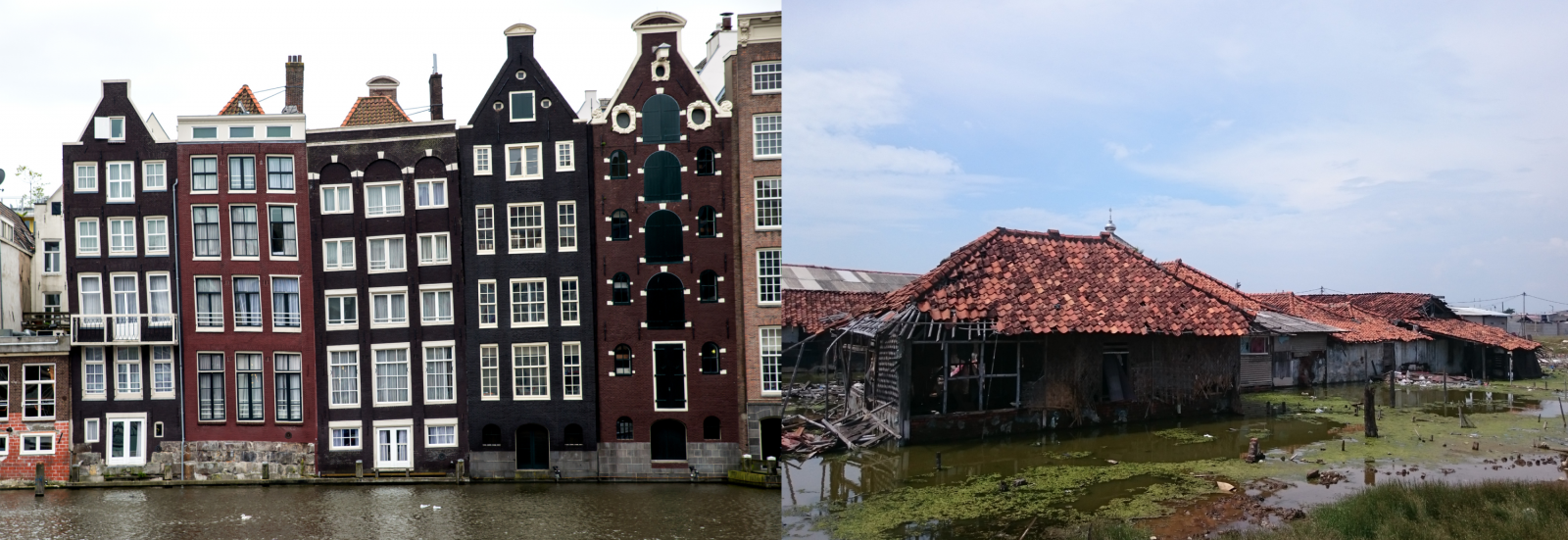Sinking deltas
A hidden problem becoming visible
Land subsidence is becoming a visible and urgent problem in deltas worldwide, which is compounded by sea-level rise (Storyline: Flood risk management) and a reduction in sediment supply (Storyline: Sediments matter). In some deltas, subsidence rates can even exceed the rate of sea-level rise. The sum of both changes is referred to as relative sea-level rise.
Drivers and consequences of land subsidence

Land subsidence has both natural and anthropogenic causes. Tectonic movement can cause land surfaces to sink slowly, whereas anthropogenically-induced subsidence occurs much faster. The main causes of anthropogenically-induced land subsidence often differ between urban and rural areas and lead to different problems.
| Urban areas | Rural areas | |
|---|---|---|
| Drivers | The extraction of resources, such as natural gas, oil and groundwater, leads to land subsidence. In urban areas and intensively used agricultural land groundwater is being overexploited to meet the increasing freshwater demand. | |
| For the construction of large buildings and agricultural purposes, large scale drainage of soils causes compaction and shrinkage of clay and peat soils. | ||
| Climate change will accelerate land subsidence by more oxidation of organic matter as a result of higher temperatures and more frequent droughts (Storyline: Drought in deltas). In contrast, more (heavy) precipitation events will result in less subsidence as groundwater levels will rise. | ||
| Due to the load of buildings and infrastructure, the upper layers of the subsurface are being compressed. | ||
| Urban areas | Rural areas | |
| Consequences | By lowering the elevation of the land surface, land subsidence increases flood risk in both urban and rural areas. | |
| Measures to reduce or repair subsidence damage may not be affordable to all people which leads to social inequality and forced migration. | ||
| Land subsidence, promoting wet conditions, may pose a risk for human health e.g. through the spread of mould in the walls of buildings, or mosquitos that may carry diseases. | ||
| Land subsidence results in economic losses: | ||
| Subsidence in urban areas can cause significant structural damage to above- and underground infrastructure and buildings. | Land subsidence may lead to failed harvests and higher production costs through waterlogging and saltwater intrusion. | |
| Groundwater extraction leads to oxidation of organic matter in the soil and hence CO2-emissions. | ||

Lacking attention and coordination
"Despite these significant consequences", Esther Stouthamer, associate professor of evolution of deltas over time, explains, "land subsidence is not yet widely acknowledged as a matter of concern and is often lacking in policy agendas". Where land subsidence is implemented in policy, it is often institutionally fragmented, poorly coordinated, and lacking assignment of responsibilities as well as stakeholder involvement. As a result, policy development and implementation processes remain ineffective.

